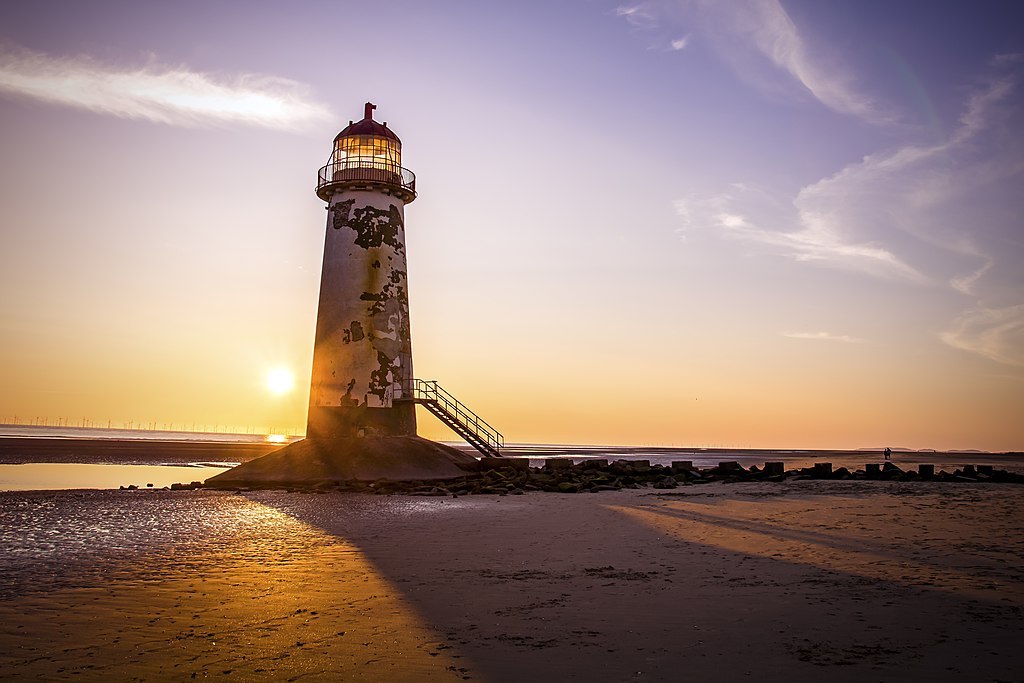The traps of de-modernization | Eurozine

Nostalgia appears to be a defining trait of our times. It emanates from virtually everywhere: popular culture, fashion, art, even politics are shrouded in a bittersweet haze of melancholic admiration for, and recreation of, the past – or at least attempts to do so. A human world devoid of mourning is likely impossible. Our very constitution as subjects always has us clinging to phantoms of the past that we cannot easily release.
A high libidinal investment in objects and its consequent cathexes linger, leading to a certain inertia, characteristic of the psyche’s workings. This can be likened to a sluggishly echoing ‘estuarine delay of discourse’ – a counterpart to Jacques Derrida’s originary delay. Things are never immediately present in discourse as they are in the Real; it always takes time for them to reconfigure the Symbolic and the Imaginary. Similarly, they always leave a residue in the domain of symbols and images as they fade back into oblivion. Hence, the cognitive and existential are perpetually, unavoidably, out of sync.
Yet, not in all moments of history is this particular trait of subjective functioning as pronounced as it is today. We seem to exist in a sort of BDSM configuration – especially in its bondage and submission aspects – where restraint is so pervasive that it becomes the primary, if not sole, source of enjoyment.
The lost future dream

Disused lighthouse, Talacre, UK. Image via Wikimedia Commons
That is precisely the political situation we find ourselves in. It’s unsurprising that conservatism is deeply imbued with nostalgia. After all, by its very nature, conservatism must invest psychic energy in the past, where its sublime object of fantasy resides. However, the other two historically significant political ideologies – the liberal and the progressive (in the continental sense of these terms) – have typically been more oriented towards possible utopias of the future than nostalgic retrotopias of the past. This is especially true for the progressive stance. Over the past two centuries, movements such as those of feminists or trade unions have consistently championed an ideal world that can only be envisioned as a future dream and never recognized as a past reality.
But there’s little of that utopic optimism left today. While feminists may be naturally the most resistant to temptations of nostalgic mourning of the past, the broader left appears mainly focused on addressing immediate threats and grievances – manifested in the ecological movement and identity politics, respectively – or lamenting the lost welfare state of a bygone era (as exemplified by figures like Sanders, Mélenchon or Corbyn). The potent revolutionary cry of The Internationale – ‘masses, slaves, arise, arise; the world is about to change its foundation’ – that fuelled progressive battles for decades, seems to have gone silent.
Mainstream liberal discourse is in no better shape. Its depressive melancholy is closely tied to the last three decades’ decline of liberal hegemony. In the early 1990s, liberalism celebrated what appeared to be its decisive and final victory. The fall of the Soviet bloc promised more than just the individual liberation of several eastern European states. It was widely interpreted as the final confirmation of a broader modernization process – the grand culmination of capitalist modernity’s free market, individual liberties and parliamentary representation. Fukuyama (in)famously dubbed this ‘the end of history’.
Yet, with the benefit of hindsight, the fundamental flaw in that vision is glaringly obvious. Paradoxically, the failure of really existing communism – liberalism’s chief rival – led not so much to the latter’s universal triumph as to the ongoing decomposition of capitalist modernity after the end of the Cold War. A proliferation of anti-modern, anti-liberal and anti-progressive movements have accompanied this decline worldwide. Among the most significant have been religious fundamentalism and political populism.
The former showed its destructive force early in the century with the 9/11 attacks in the US, effectively dispelling the myth of universal and uncontested global enthusiasm for capitalist modernity. The ascent of populism has been more gradual, but since the early 1990s, it has consistently gained more and more support. This culminated in a series of significant electoral successes in the 2010s, with figures and movements like Orbán, Erdoğan, Trump, Modi, Brexit, Kaczyński, Duterte, Front National, and AFD (Alternative for Germany), to name a few. In certain regions, like Poland, populists have faced recent setbacks. However, the populist challenge is far from contained. It’s likely to persist and perhaps haunt us in various forms for the foreseeable future.
The return to essentialism
Truth be told, the unexpected surge of populism as an expression of discontent would have been less surprising if we had paid more attention to the disquiet that capitalist modernity stirred in the postcolonial world decades ago. Clifford Geertz, observing the aftermath of decolonization in various parts of the world, most notably in Indonesia, highlighted a crucial contradiction tied to the dialectical relationship between tradition and modernity, and to the growing integration of local societies into the global flow of cultural codes. In his 1971 text, After the Revolution: The fate of nationalism in the new states, he outlined the tension between ‘epochalism’ and ‘essentialism’.
For Geertz, epochalism signifies a desire to align with the zeitgeist and live up to the ideals of the epoch. The zeitgeist of the second half of the twentieth century encompassed liberal democracy and modernity, including universal suffrage, advanced means of communication, industrial infrastructure expansion and widespread prosperity. In contrast, essentialism embodies the aspiration to preserve one’s inherent qualities: culture, uniqueness, local characteristics, and the whole array of affiliated cultural norms and societal institutions.
Contrary to what Daniel Lerner once assumed, it is not accurate to say that developing nations simply idolize Western-style modernization and eagerly await its eventual establishment. While they undoubtedly wish to improve their harsh realities – after all, no one wants their malnourished offspring to succumb to diseases like malaria – they also hold a strong inclination to uphold their uniqueness. From this vantage point, both religious fundamentalism and populism can be seen as a shift away from epochalism and a return to essentialism – a shift so powerful that it has now defined another epoch of its own.
Hypotheses on modernity
Insightful new analyses have been made since Geertz’s original diagnosis. As Frederic Jameson aptly posited, modernity, which has been blossoming in the western world since the advent of capitalism, is an intricate amalgam of two distinct facets. Jameson identifies ‘modernization’, with reference to progress in material production, encompassing technology, infrastructure, machines, and the like, and ‘modernism’, which he interprets as a value system anchored in personal autonomy and emancipation. These two dimensions have historically been intertwined, yet their relationship is as intricate as it is intimate.
Michel Foucault highlighted that, in certain contexts, these aspects can even be at odds. Specifically, the material advancement – which aligns with Jameson’s modernization – equips governing entities with enhanced tools to curtail individual freedoms, resonating with Jameson’s notion of modernism. Foucault posited that a pivotal challenge of the Enlightenment was discerning how to separate the augmentation of capabilities from the escalation of power dynamics.
In the postcolonial realm, and manifestly in the rise of contemporary populism, we’ve observed a similar division or bifurcation of modernity but with a reverse objective: the aim has been to harness the new technological prowess imparted by modernization to stymie the spread of modernism (in Jameson’s understanding of these terms). This approach enabled those disenchanted with capitalist modernity to take advantage of the boons of material progress (aligned with Jameson’s modernization or Geertz’s epochalism) to bolster essentialism, curbing the thrust of modernity.
This tactic has proven instrumental in fragmenting the global landscape, with both religious fundamentalism and modern right-wing populism as its agents. We observe this strategy being deployed in Saudi Arabia, where a waning monarchy leverages its oil fortune to quash dissent. Similar patterns emerge in locales like Modi’s India and Erdoğan’s Turkey. This tactic lay at the heart of strategies adopted by Poland’s Law and Justice Party between 2015 and 2023: utilizing economic prosperity and the resources it garnered to support entities and individuals opposing the embrace of so-called ‘European values’, which champion inclusivity, equality and emancipation.
Ironically, the material facet of the modern project has achieved near-universal acceptance. With few exceptions like Bhutan or North Korea, capitalism has emerged as a force that unifies the world in a universally binding pattern of material relations. Yet, it hasn’t culturally united the globe. Instead, it has made the world more fragmented and socially divided than it was around 50 years ago, a time when even nations such as Turkey, Iran and Afghanistan seemed to have been on a journey of social and cultural transformation towards a liberal regime.
The reversal of modernization theory
Fukuyama’s ‘end of history’ hypothesis marked dominated both social sciences and public discourse in the latter half of the twentieth century and early twenty-first century, known as modernization theory. Following pioneering works such as Rostow’s The Stages of Economic Growth: A non-communist manifesto, originally published in 1960, and Lerner’s The Passing of Traditional Society: Modernizing the Middle East from 1958, modernization theorists contended that not only must tradition be eclipsed for modernity to thrive but a global, linear progression towards modernity also exists. In this view, developed nations act as beacons, illuminating the path forward for their developing counterparts.
This perspective wasn’t solely a mainstay of liberal thought. It found its parallel in leftist ideology. Indeed, it aligns with Marx’s observations on British colonial rule in India. The mark of a truly dominant ideology is its ability to resonate across diverse theories and approaches to social reality, even those constructed in opposition to one another.
Moreover, the modernization paradigm, which held sway in twentieth-century politics and social science, has not just been surpassed but indeed inverted. Now, it appears more plausible that the peripheries of the capitalist world system are foreshadowing the future of its centre, rather than the reverse.
Revisiting Lerner’s Modernizing the Middle East provides a telling case in point. Focusing on Turkey, Lerner illustrates how the nation emulated its social and political transformation on the trajectories of European powers, chiefly France and Germany. A significant component of this transformative effort was laicization, exemplified by policies such as the prohibition of all traditional religious attire.
Lerner postulated that, inspired by laicization in France, Turkey would, in a span of about 50 years, evolve to resemble Western Europe. Not only has this prediction not materialized, but the reverse seems to be unfolding: France, considered an unwavering bastion of laicization five decades prior, now grapples with legislation restricting women from donning head coverings in public spaces and institutions.
Other disturbing developments directly reverse the assumptions of modernization theory. One of the most significant is the precarization of labour relations at the heart of the capitalist world system. German sociologist Ulrich Beck, who wrote about the ‘Brazilianization’ of labour relations in Europe and the US, diagnosed this already in the late 1990s. He highlighted how both the job market and labour conditions in what used to be welfare states are increasingly resembling those familiar in Latin America.
Similar phenomena have been observed by urban anthropologists. John Comaroff and Jean Comaroff, in their book Theory from the South: Or, how Euro-America is evolving toward Africa, draw attention to rising inequalities, deteriorating public infrastructure and declining social services that make cities in the so-called developed world increasingly resemble those in post-colonial countries. Economists Larry Elliott and Dan Atkinson even go as far as labelling London ‘Lagos on Thames’ and suggest that the UK is moving towards a ‘third-world economy’
Neo-liberal de-modernization
The latter example is particularly interesting, as it allows us to grasp the mechanism of de-modernization. This isn’t merely a cultural phenomenon but rather a by-product of recent developments within the capitalist economy – most notably the neo-liberal shift. This turn has triggered a consistent and systematic erosion of the public sector and the dismantling of various welfare mechanisms that previously provided relief to the most exploited social classes: consider, for instance, the decline of the NHS in the UK and the role it played in Brexit propaganda.
Thus, the tension between epochalism and essentialism, as described by Geertz, appears to be reconfigured: the spirit of the age, or the zeitgeist, now seems to favour cherishing one’s essence. No longer are even the most regressive prejudices of any society to be challenged; instead, countries that once stood as beacons of social progress now seem to be on a path of de-modernization. Ironically, while the world appears more unified, it is increasingly fractured.
Is this the demise of the idea of modernity and progress? That’s not the conclusion I aim to draw from this essay. What has undeniably come to an end is the association of modernity with a specific part of the world and its developmental trajectory – namely, the West.
This is, of course, deeply traumatic for the West.
As Slavoj Žižek observes, the admiration that everyone, especially Eastern Europe, held for the West acted as a source of gratification for its inhabitants. The gaze of the enraptured non-Western Other allowed Westerners to believe they weren’t merely partaking in a thoughtless consumerist frenzy but were instead leading the world in the vital task of modernization. Now, with populists and fundamentalists globally giving the liberal, westernized elites a figurative slap in the face, it becomes increasingly challenging for formerly dominating groups to maintain their paternalistic illusions, leading to their profound disarray.
If there’s a silver lining, it’s the realization that modernity was never a solely capitalist project. In truth, the heart of critical theory – with its opposition to capitalism as the ultimate structure for the world and its emphasis on individual emancipation – is also an integral part of the modern legacy. With its robust democratic facet, it aligns with a minoritarian strand of modernity that finds its conceptual roots in the philosophy of Baruch Spinoza.
The tension intrinsic to capitalist modernity, which Jameson depicted as the clash between modernization and modernism, is adeptly dissected by critical theory. Now, as capitalism teeters on the brink of devastating our entire ecosystem and as liberal modernity splinters, we need to cast our sights beyond capitalism, towards an alternative modern vision.
It is not a good time for nostalgia and melancholy, be it liberal or any other. If we fail to identify this new direction, the end of history we heralded 30 years ago might ominously foreshadow the end for the world, at least the world as we know it.
Source link




